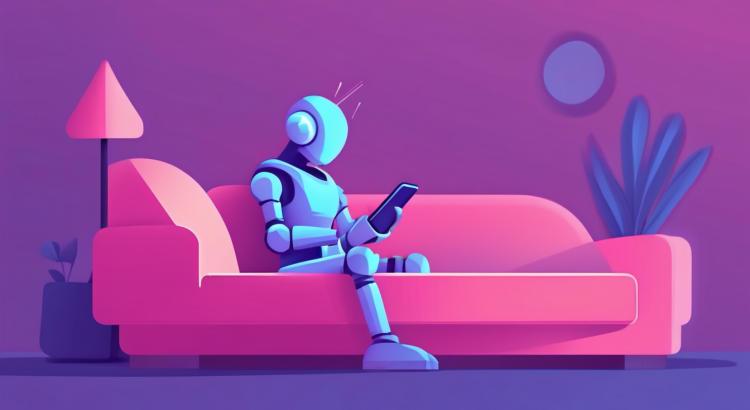TX Health Watch reports rapid growth of AI mental health apps that reshape emotional support access while raising urgent safety questions.
How AI Mental Health Apps Became Mainstream
AI mental health apps emerged from a mix of rising stress levels, long therapy waitlists, and better smartphone access. Many people now turn to chat-based tools for quick comfort, daily check-ins, and mood tracking.
These services promise 24/7 support without appointments. AI chatbots can simulate empathic conversation, offer journaling prompts, and suggest coping strategies once reserved for therapists’ offices.
However, the speed of adoption has outpaced clear rules. Some apps blur the line between wellness tools and therapy. Others suggest techniques that resemble clinical treatment without making their limits obvious.
Key Innovations Behind AI Mental Health Apps
The main strengths of AI mental health apps come from modern language models, behavior tracking, and powerful analytics. These elements combine to create personalized experiences that feel human-like and responsive.
Most platforms use natural language processing to understand text entries and generate supportive replies. Meanwhile, smartphone sensors and self-reported data track sleep, activity, and mood shifts over time.
In addition, many tools analyze long-term patterns and then adjust recommendations. They may suggest breathing exercises on stressful days or encourage social contact when isolation patterns appear.
Benefits: Access, Anonymity, and Constant Support
Supporters argue that AI mental health apps expand access for people who would never consider traditional therapy. Cost, stigma, and cultural barriers often prevent users from seeking professional help.
These tools can feel safer than opening up to another person. Users type at their own pace and explore difficult feelings without fear of judgment. Anonymity lowers the emotional barrier to start.
Meanwhile, users can engage anytime. When anxiety spikes at midnight, a chatbot still responds. Therefore, some people use apps between therapy sessions as a stabilizing tool, not a replacement.
Where AI Mental Health Apps Fall Short
Despite the promise, AI mental health apps have serious limitations. Language models cannot fully understand nuance, trauma histories, or complex risk factors behind self-harm.
Many apps rely on generic advice that sounds supportive but lacks deep clinical grounding. On the other hand, users may interpret polished responses as professional guidance, even when systems clearly state they are not therapists.
In high-risk situations, delayed or inappropriate responses can worsen distress. AI cannot reliably assess suicidal intent or safety planning the way trained clinicians can.
Data Privacy and the Hidden Costs of Free Support
Another major concern with AI mental health apps involves sensitive data. Users share their fears, relationships, and daily struggles, often assuming strict confidentiality.
However, many companies use personal information for analytics, product design, or even advertising. Long privacy policies hide complex data-sharing terms that few people read completely.
As a result, extremely intimate details may be processed by third parties. Without strong regulation, health-related profiles can influence insurance, employment, or targeted marketing in the future.
Clinical Oversight, Safety, and Regulation Gaps
Regulators are still catching up with AI mental health apps. Most products sit in a gray area between wellness technology and medical devices, escaping strict clinical standards.
Some platforms consult clinicians during design. Nevertheless, ongoing monitoring, safety evaluation, and outcome research often remain limited. Independent audits are rare.
Baca Juga / Read More: Global strategies to strengthen mental health care systems worldwide
Stronger rules could require transparency reports, clear risk warnings, and evidence for any therapeutic claims. Standardized benchmarks would help users understand which services meet minimum safety requirements.
How Users Can Safely Navigate AI Mental Health Apps
People who rely on AI mental health apps should treat them as complementary tools, not replacements for professional care. Serious symptoms such as self-harm thoughts or severe depression need human support.
Users can protect themselves by checking who owns each app, reading privacy policies, and verifying whether any clinical advisors are involved. Transparent design is a good first signal of trustworthiness.
Furthermore, people should regularly ask whether the app truly helps. If conversations feel repetitive, invalidating, or confusing, it may be time to seek a human therapist or peer support group.
Balancing Innovation and Risk in Emotional Tech
Developers of AI mental health apps hold responsibility to design safer products. Clear crisis protocols, conservative claims, and built-in handoffs to hotlines can reduce harm.
Meanwhile, policymakers, clinicians, and researchers must collaborate to evaluate real outcomes. Evidence-based standards should guide claims about effectiveness, especially when tools mirror therapy methods.
Ultimately, the future of AI mental health apps depends on honest communication about what they can and cannot do. When users understand limits, they can combine digital support and human care more wisely.
Responsible Use of AI for Emotional Wellbeing
AI mental health apps will likely remain part of everyday emotional care. Their convenience and constant availability make them appealing first steps toward support.
However, safe progress requires critical awareness from users, clear ethics from developers, and smarter regulation. Human relationships must stay at the core of healing.
With thoughtful use, AI mental health apps can enhance wellbeing without replacing professional judgment or human connection that people still need most.



